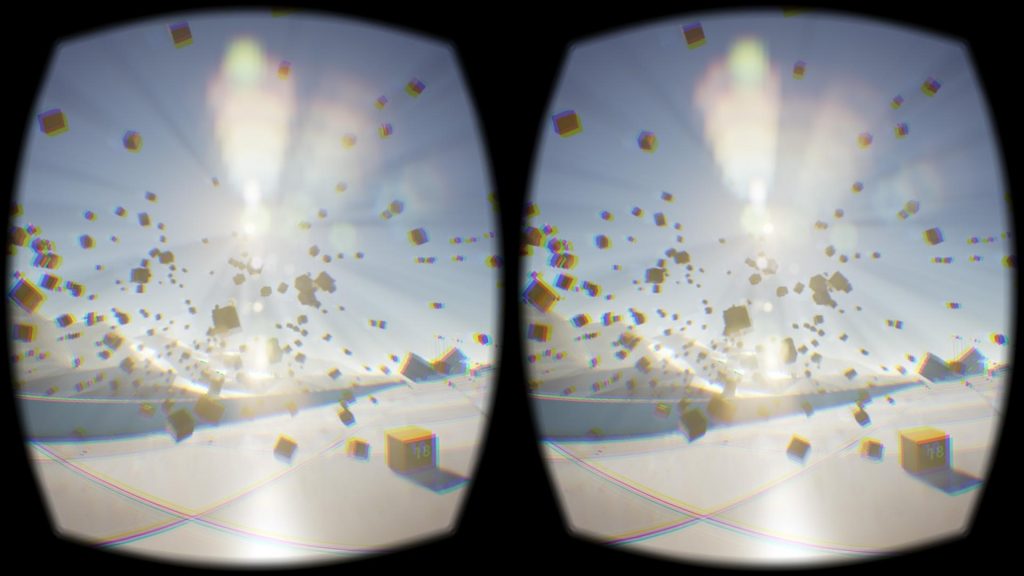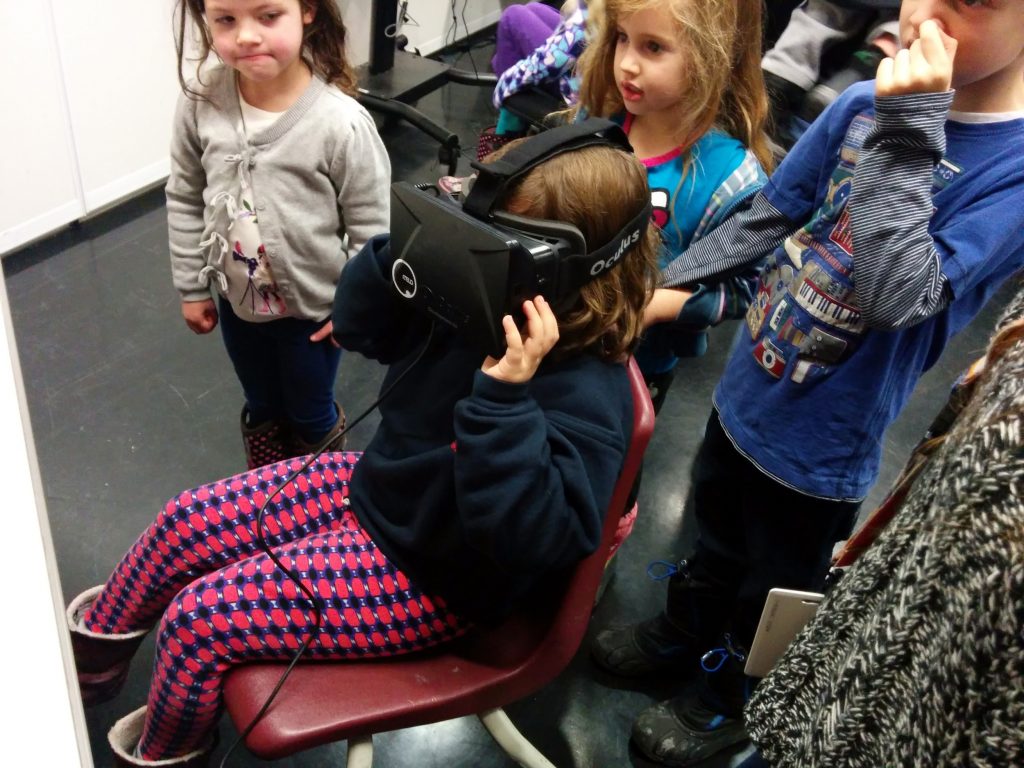InTrans / Mar 23, 2017
Driving the future: The pros of virtual reality
Go! Magazine
 posted on March 23, 2017
posted on March 23, 2017
Virtual reality (VR) and artificial intelligence could change transportation as we know it. The question is: Will it be a change for the better or worse?
Virtual reality is a term used to describe three-dimensional (3D), computer-generated environments that can be explored and interacted with by its users. Virtual reality usually consists of a headset around the eyes with additional gadgets to make the experience more realistic.
More and more, VR technology is merging with the world of transportation. As we talked about last time, virtual reality headsets are already being used in the automotive industry to improve safety and efficiency for engineers, drivers, and pedestrians. So, is that a good thing?
The Oculus Rift
The VR headset behind the changes being made in the automotive industry is called the Oculus Rift, developed and manufactured by a division of Facebook Inc. called Oculus VR. Although the Oculus Rift isn’t the only VR headset out there, it is the most commonly known.

Oculus founder, Palmer Luckey says that virtual reality is already playing an important role in our society. He believes that one day (in the near future) VR headsets will be as affordable as mobile phones are today. When that happens, he believes the demand for virtual reality will expand and grow.
He also notes that virtual reality is “new and shiny” but not always the best tool for the problem at hand. That said, Oculus Rift headsets are already being used for virtual design and education in the automotive industry and seem to be solving some important problems. But, do the benefits outweigh the risk? Does it really help, or is it just a passing trend?
VR: The good
Although virtual reality is a relatively new technology, its benefits to the world of transportation and beyond haven’t gone unnoticed.
First, VR allows researchers from multiple disciples to study the impacts of extreme conditions on the decision-making process without the unnecessary travel and expensive set-up. This opens up a variety of opportunities for researchers, especially in transportation, as VR allows for their testing to be “true to life.” Researchers at Iowa State University in Ames, Iowa, are already doing this with their “C6” virtual reality room.
VR also provides a safe way to build skills in normally challenging or risky situations—such as surgery. Virtual reality allows for real-time feedback, meaning the user gets instant results about their success or failure, allowing for the acceleration of one’s learning curve.
VR also allows its users to develop skills and techniques at their own pace. It expedites rehabilitation, using VR system cameras to capture body movements that help people recovering from injuries improve their mobility. VR can even help patients dealing with severe pain, immersing them in a simulated, comfortable environment.
Lastly, VR is helping people with autism—a mental condition that causes difficulties in communicating, forming relationships, and using language and abstract concepts. Research has already proven that children with autism interact well with technology, as it can help them learn social cues while enhancing their motor skills.

VR: The exciting?
Seeing the benefits of VR—especially the ones helping to transform the transportation industry—can be thrilling. The world around us is changing rapidly and virtual reality is driving this change. Although it’s exciting, we also need to be critical of this newfound technology.
As VR and artificial intelligence technologies take hold of the world as we know it, the potential drawbacks are important to keep in mind. In the next article, we’ll talk about the cons of virtual reality, and then you’ll be able to begin to formulate your own opinion on one of the most begging questions of our time: Is VR good or bad for us?
References
https://www.wired.com/2015/04/palmer-luckey-social-change/
https://www.rewireme.com/insight/9-ways-virtual-reality-may-helping-harming-us/
Related links
(Video) CNET, Oculus Rift review: https://www.cnet.com/special-reports/oculus-rift-review/
(Video) Digital Trends, Oculus Rift review: http://www.digitaltrends.com/vr-headset-reviews/oculus-rift-review/
(Website) Oculus Rift: https://www.oculus.com
By Hannah Postlethwait, Go! Staff Writer